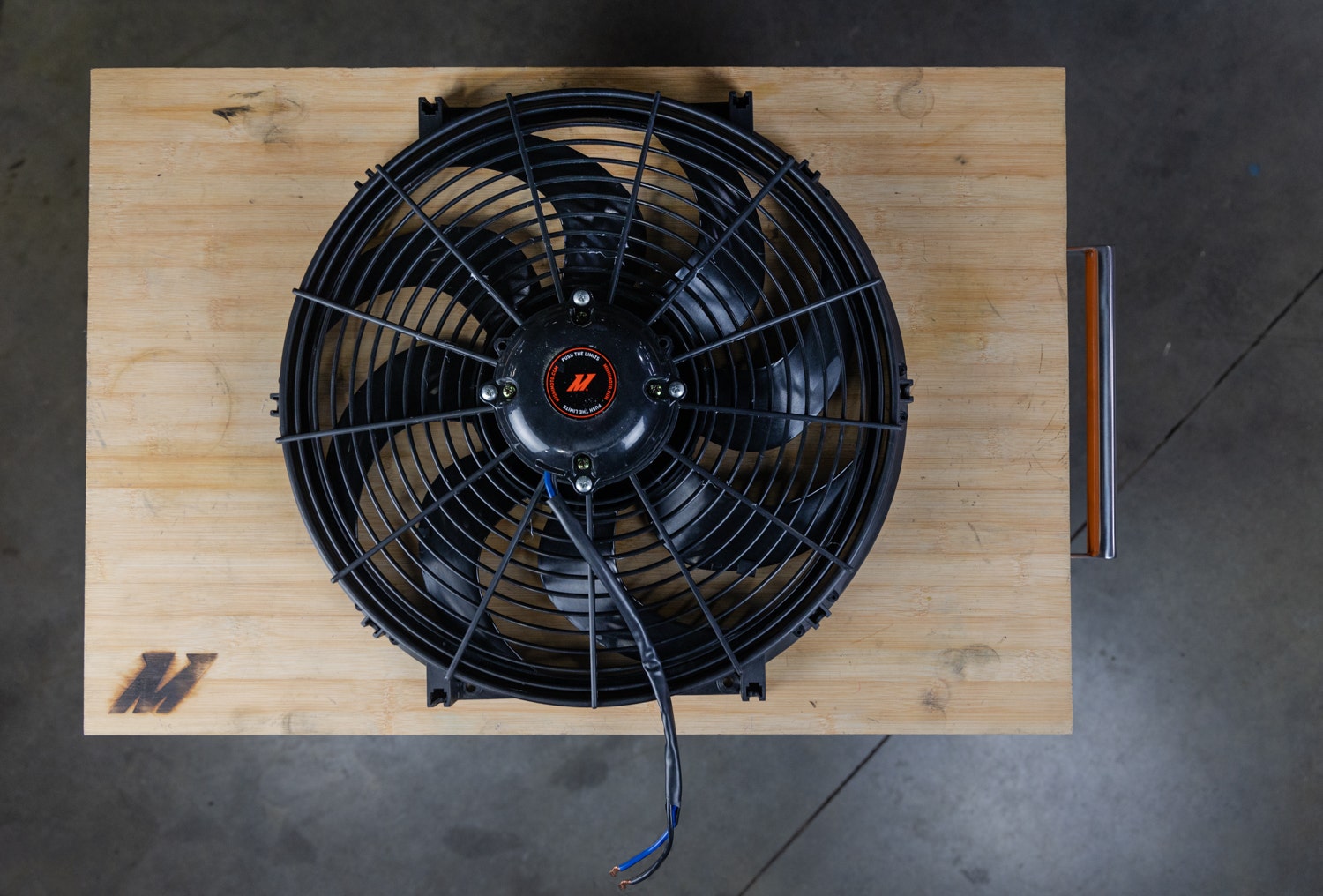
You could say that we're big fans of keeping your vehicle cool here at Mishimoto. Take a look at our repertoire. You'll find a slew of radiators, intercoolers, oil coolers, transmission coolers for a large array of different types of vehicles, all partnered with deep dives into the inner workings of each system. While we're often spelunking down the rabbit hole of these different cooling systems, there's one critical component that's often overlooked - the fans.
It might not seem like it, but the fans under your hood are the unsung heroes of maintaining fluid temperatures when it's most needed. Of course, cooling any vehicle is a group effort, but that effort is in vain without a source of cool, flowing air. So, whether you're caught in dense traffic, staging in the pits, traversing tricky terrain, or hauling a heavy load, those fans are putting in the effort to keep your fluids from boiling over.
They say in jazz, it's about the notes you don't play, and something similar can be said about electric fan setups. Depending on your vehicle's size or age, the primary radiator fan could still be driven mechanically or constantly spinning, in other words. On the other hand, electric fans utilize either a thermostatic controller or pulse width regulation to activate as needed for more effective use of the blades. In general, it's much more efficient, economical, and all-around better for the long-term health of the engine to run at operating temperature, so utilizing a fan setup that only turns on when needed is ideal for perfect cooling performance.
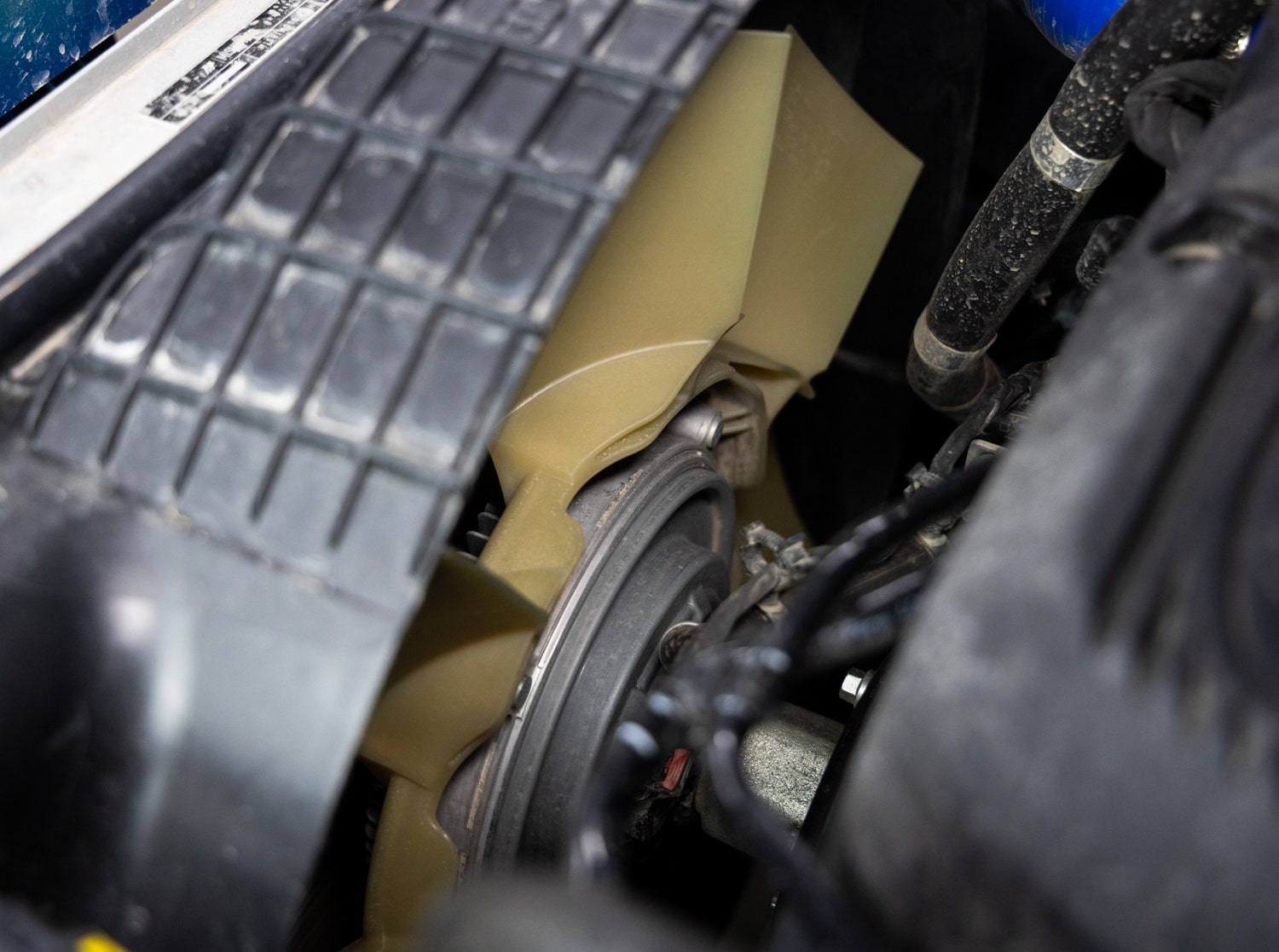
So, you want to update your mechanical fan or move more air than your OEM electric setup, but you don't know where to start. That's ok, and we're here to help! Selecting the perfect electric fan setup is a balancing act between three specifications: Amperage, CFM, and available space.
Amperage refers to the amount of electrical power needed to drive the electric fan. For example, turning the fan would sap power directly from the engine in mechanical drive systems. Still, these electric fans give that power back and draw directly from the electrical system instead. That said, when installing a new performance fan on your vehicle, it still needs to either match the OEM amperage specifications, or you need to ensure that your equipped alternator and wiring can support the increased power draw.
With your amp limitations noted, the next step is to determine how much air that electricity will move. Every vehicle has different needs for airflow volume, which depends on the size, power, and modifications to the engine. Ideally, you'll want to choose the fan with the highest CFM rating that won't exceed your amperage limitations since moving the maximum amount of air as quickly as possible is the fan's mission. The trade-off to higher CFMs in most brushed electric fans is that it costs more amps to move larger fan blades at high RPMs, so it's key to properly balance your CFM needs with your amperage limitations.
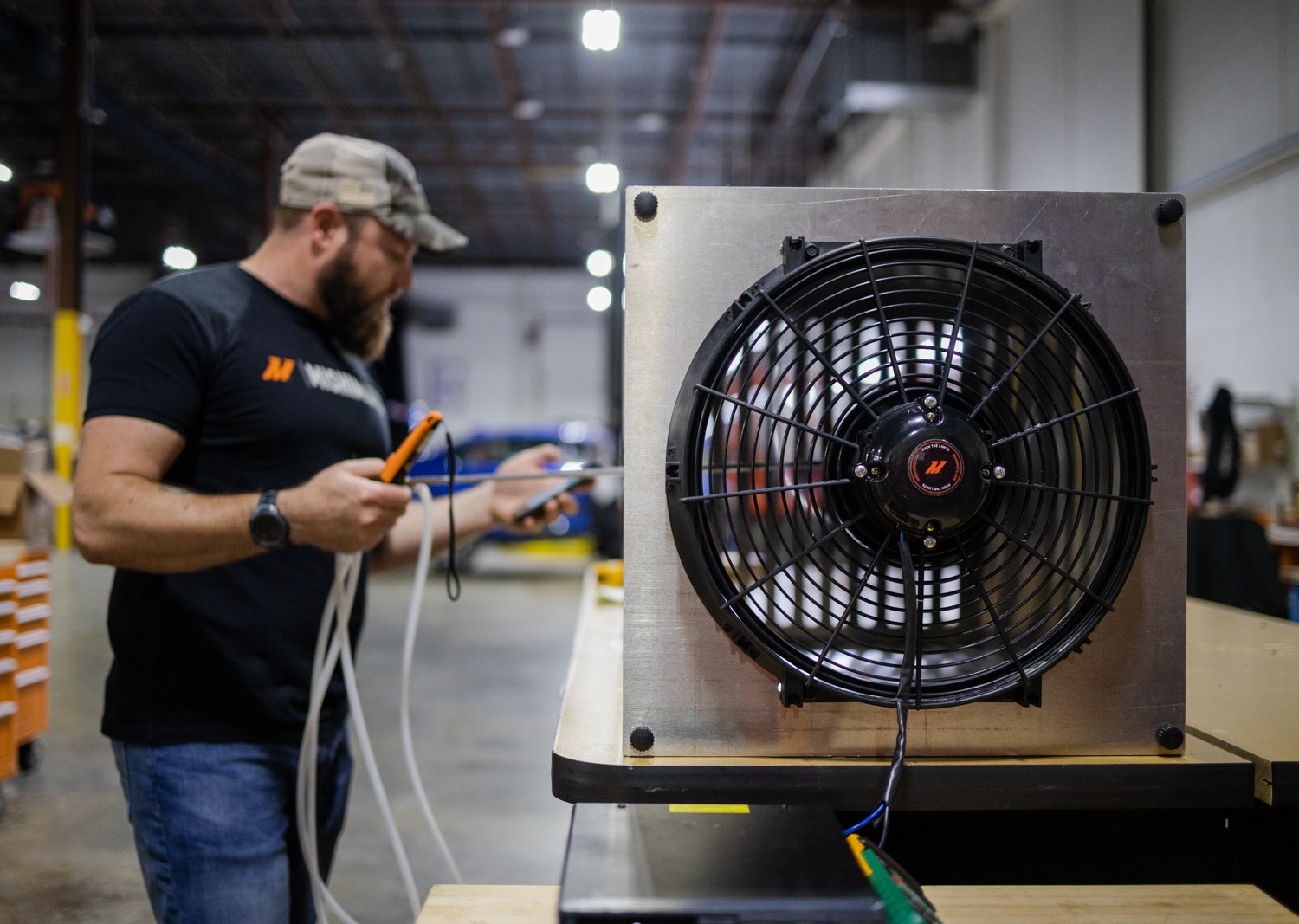
Your radiator size also plays a role in your electric fan selection, both in size and CFM requirements. Chances are, if you're investigating fan upgrades, you're working on more efficient cooling solutions for your vehicle, which typically includes larger radiators. The first thing to consider is proper coverage of your cooling system's heat exchanger to ensure even air movement across the core. This could either be in the form of a single large fan or multiple smaller units to span the area of the radiator. In some cases, radiators are just too large to accommodate electric fan setups which is why we see manual fan clutches still in use on massive, heavy-duty trucks. The amperage draw would be too high to suit these trucks cooling needs, so sacrificing a few lb.-ft of torque is a much more efficient option in these cases.
The second consideration is your radiator's core thickness. On its own, your radiator fan has no issue moving plenty of air, but that performance is throttled with a heat exchanger placed in front of it. Once mounted, the fan needs to overcome the resistance put in place by the radiator, otherwise noted as static pressure. Static pressure is the amount of pressure a fan can produce in an enclosed space, which is the radiator in this case. Regarding the fan and radiator relationship, static pressure is the amount of resistance the radiator creates for the fan. As your core thickness increases with upgraded aftermarket fans, you'll need to produce a larger CFM rating to push or pull air through the fins adequately.
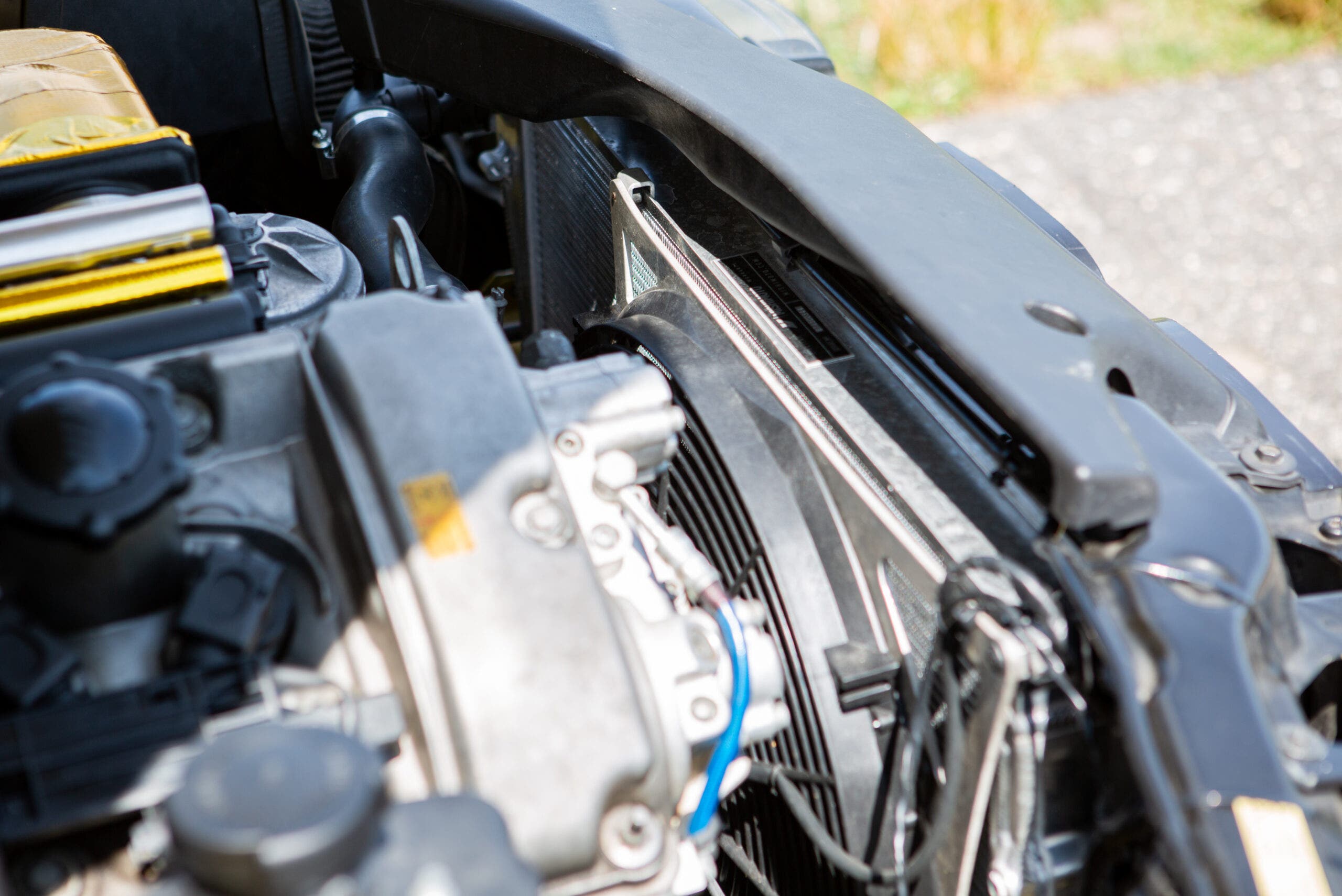
The final stop on our selection checklist is your fan placement. It seems like a no-brainer since directly against the radiator is the ideal placement for your fan. However, depending on your vehicle or build, engine bay space could be at a premium, which could significantly reduce your fan selection. Therefore, placement comes down to selecting a puller or pusher fan. The most popular and practical choice is the puller option, which mounts your fan on the backside of the radiator and pulls the air through the core. This option ensures maximum airflow to your radiator, with the option to run a fan shroud.
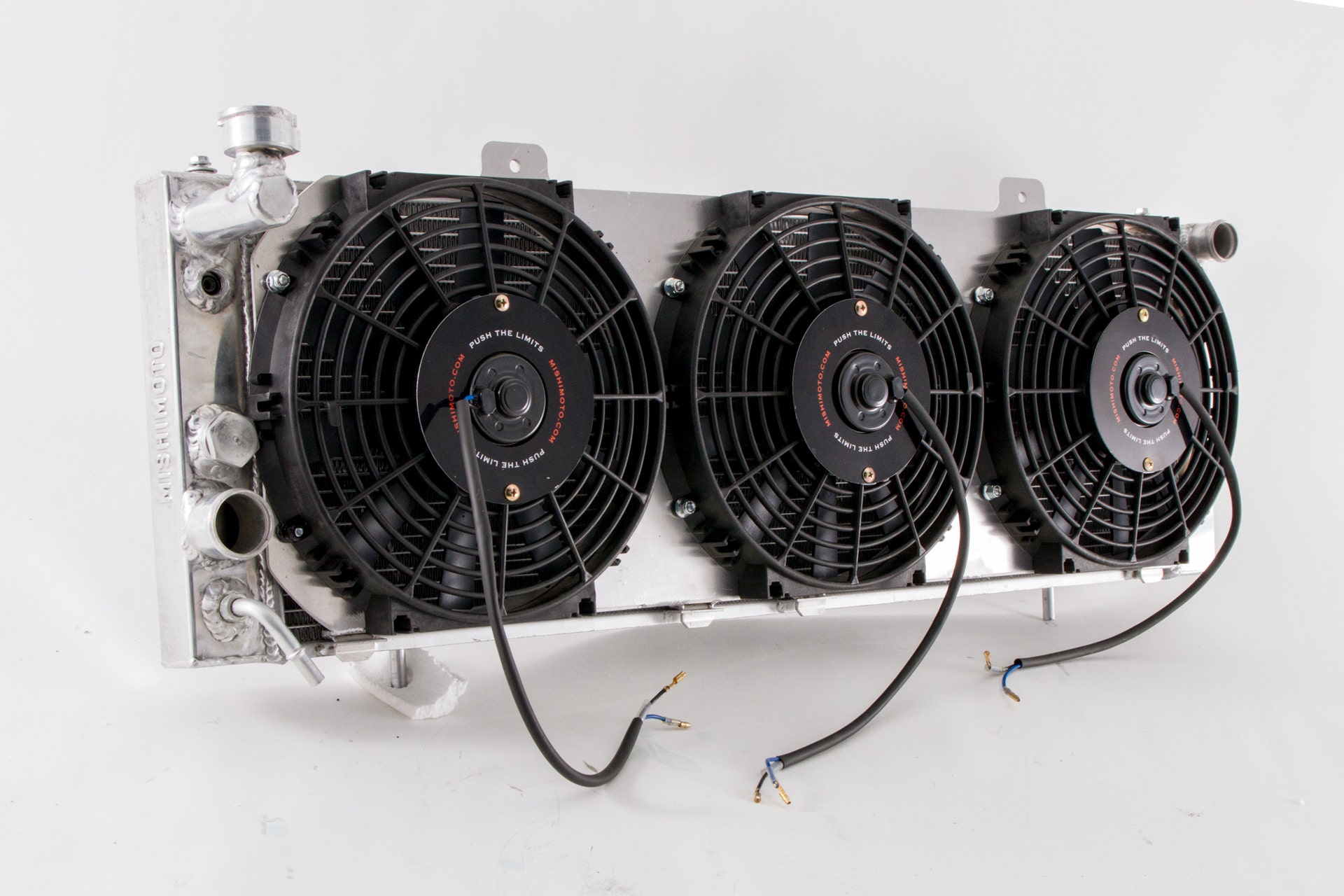
So you've filled your engine bay to the brim with a fire-breathing massive engine swap, and there's barely room for a radiator, let alone a fan. That's ok since front mounting your fans is also an option with a pusher setup. Since plenty of electric fans, including a selection of ours, are reversible, installing a pusher fan for your cooling setup is still a viable option. This setup is just as it sounds, where the fan mounts to the front side of your radiator, pushing fresh air through the radiator, and can be found as the OEM setup in some older BMWs for example. The caveat to this setup, though, is that the fan is now an obstruction which will reduce airflow through your radiator.
Choose Your Fighter
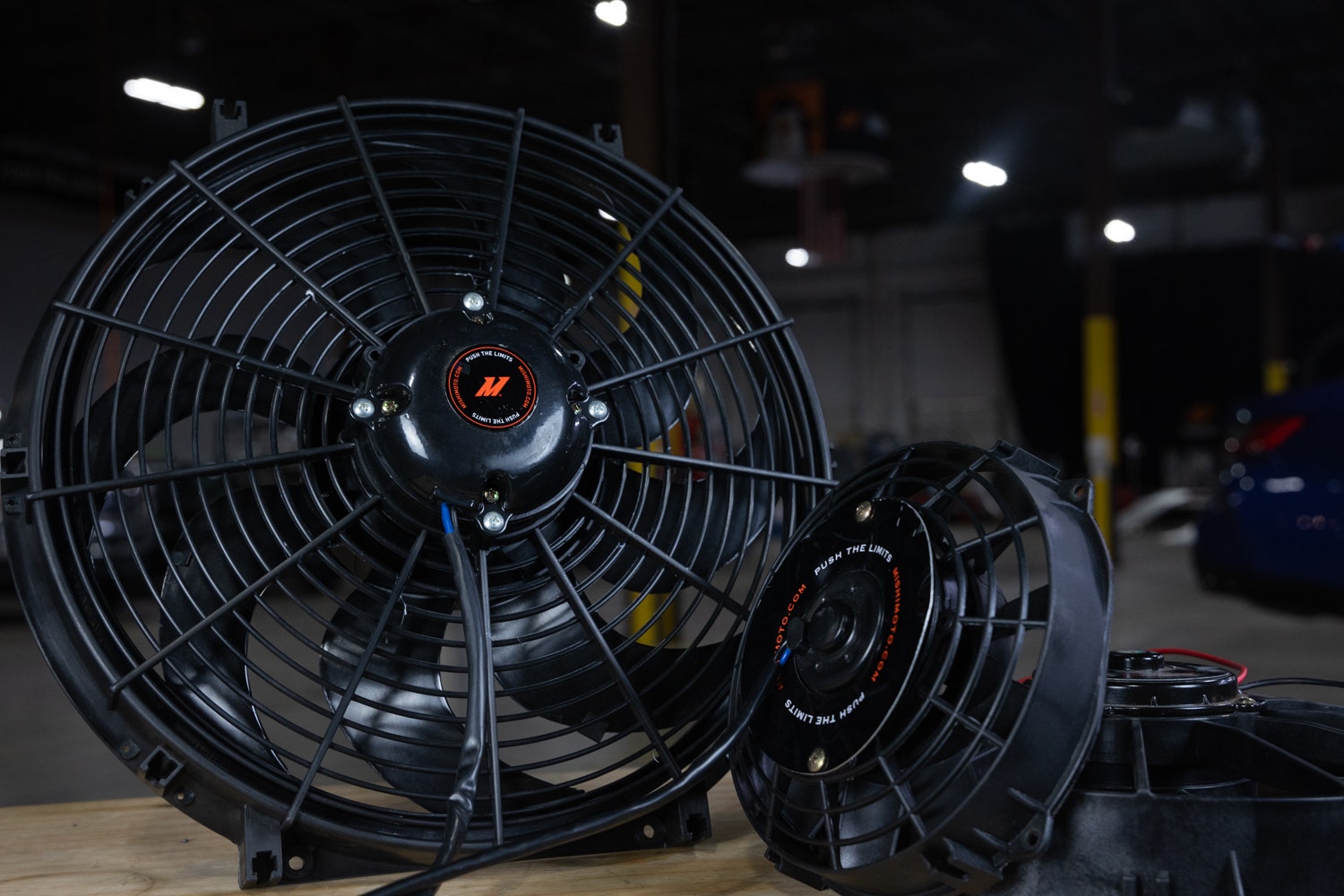
Like I said earlier, we're big fans of keeping your vehicle cool, which is why we developed a full line of electric fans and accessories to suit all your cooling needs. We broke our fans into three categories: Race Line, Slim Line, and Curved Blade to simplify your selection.
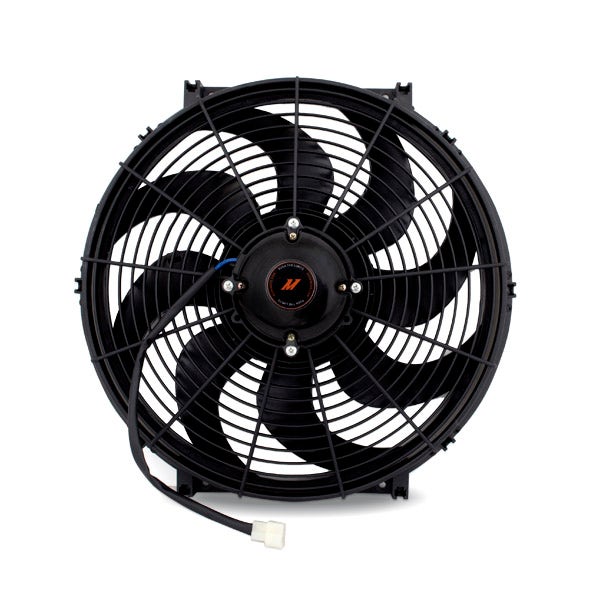
Our Race Line fans are for vehicles that have high cooling demands. This range of fans spans 10" to 16" diameters and are designed to spin at higher RPMs to deliver the highest possible CFM ratings. While these fans are the most powerful of the Mishimoto fan family, they will require higher amperage, and the larger electric motors will demand more clearance than our other options. So, if your vehicle has high airflow requirements, such as track vehicles or serious off-roaders, this would be the best choice for you. Just make sure to double-check your clearance and electrical restrictions before installation.
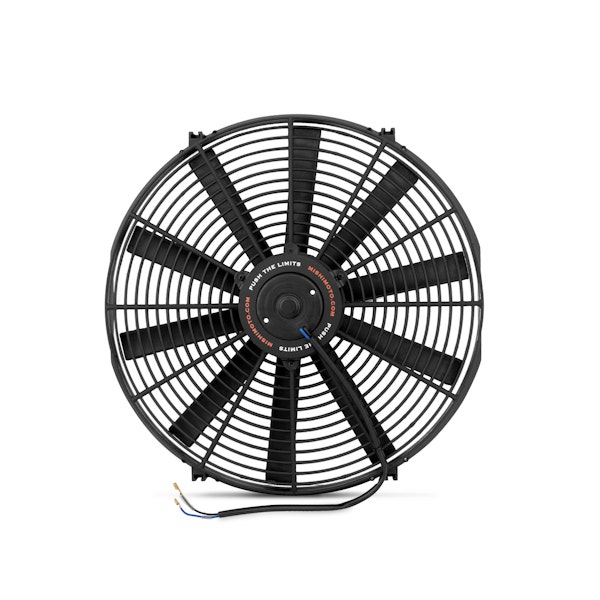
For those looking to shoe-horn a fan into an already tightly packed engine bay, we also offer a range of slim fans that are ideal for tight fitments. This line of fans covers 8" to 16" for a broader range of applicable uses, including oil coolers, or powersports. Our Slim Line fans are perfect if you're looking to enhance cooling on your daily driver, weekend canyon carver, and other street performance applications.
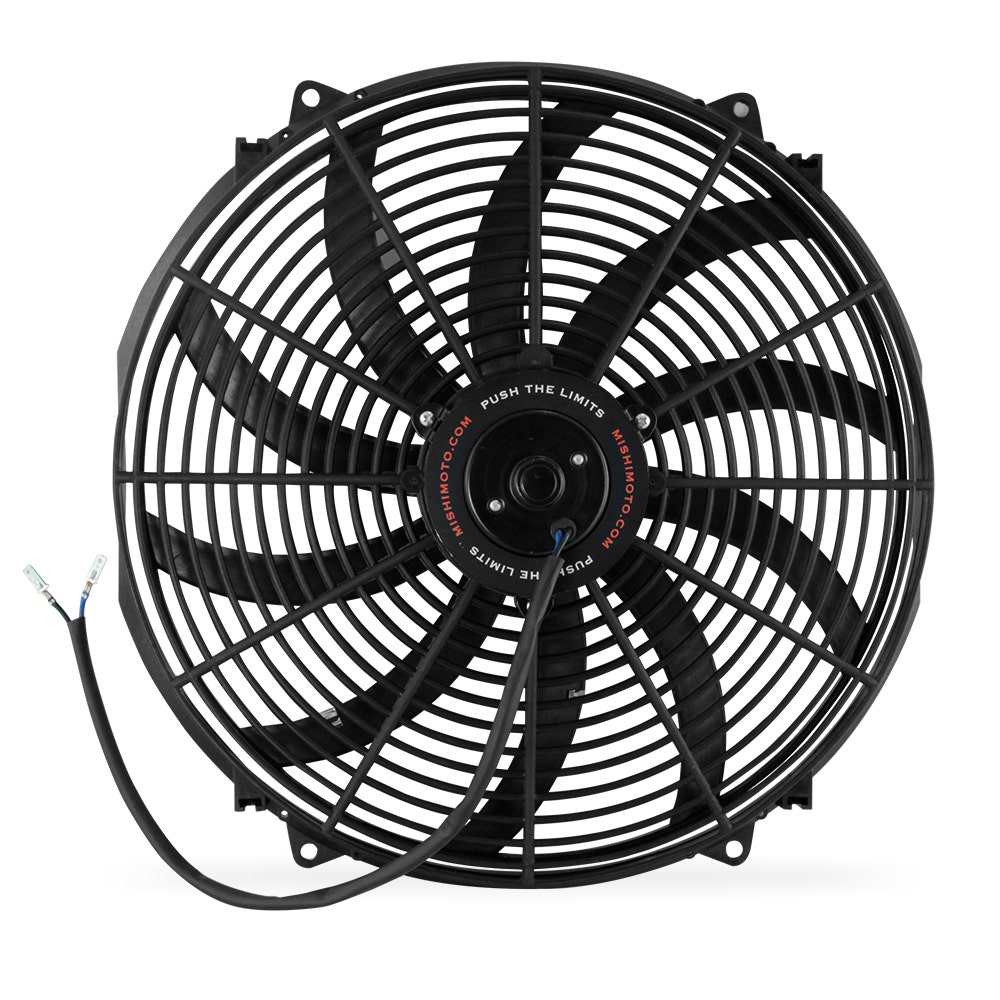
Nestled between our other fan options are our curved-blade fans. These fans are based on our Slim Line options but with a varied blade design to enhance airflow. Since our curved blade fan options are still based on our Slim Line, they won't move quite as much air as our Race Line fans but are perfect for those looking for some additional cooling power in their tightly packed engine bay.
To top things off, we also offer universal mounting kits for our range of fans, along with resistance-based adjustable fan controllers to fully adapt any fan to your vehicle. So, head over to our website to grab the fan setup that's best for you!
Mishimoto Universal Fans and Accessories
If you're after something more application-specific, we also offer a wide range of direct fit, plug-and-play fan shrouds as well:
Mishimoto Fan Shrouds
Thanks for Reading!
-Nick








